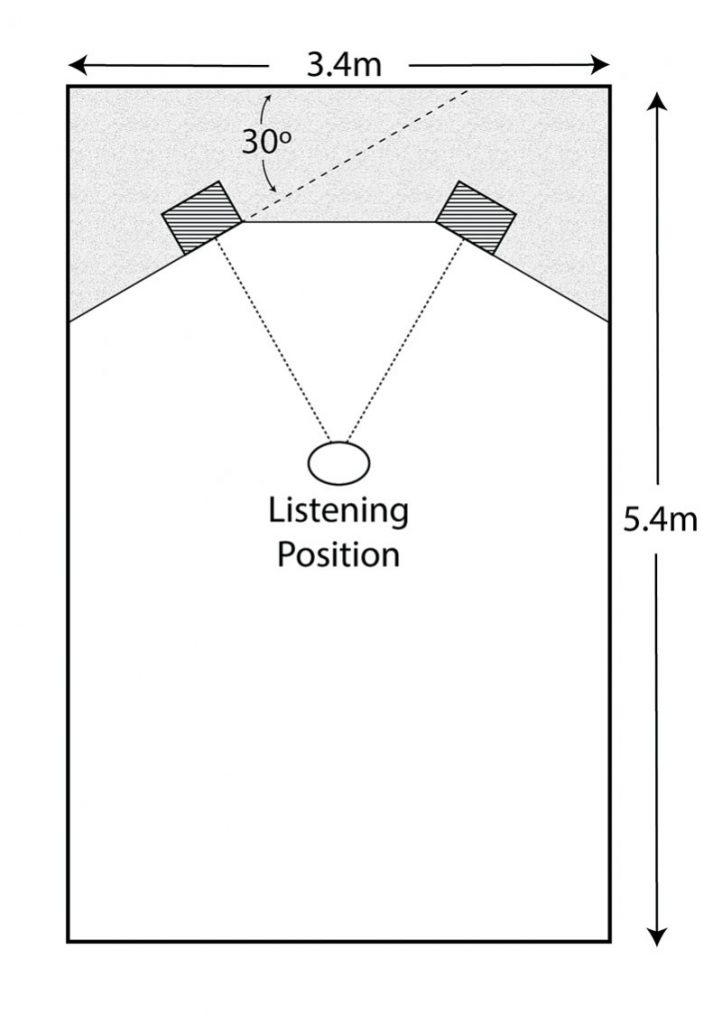Tutors’ Tutorials: Basic Studio Acoustics
Tutors’ Tutorials: Basic Studio Acoustics
One of the single biggest improvements you can make to your home recordings is to increase the acoustic performance of your listening room. Good speakers will not sound their best in an inadequate environment, so before spending a truckload on beautiful studio monitors it will pay to consider the room in which you will put them.
Room modes exist between the boundaries in your room, causing affected frequencies to be too loud in one place and inaudible in another. This may fool us into thinking we hear a problem that isn’t really there, or miss a problem because we can’t hear it. Room modes can’t be altered without changing the dimensions of your room, so ideally the room should be rectangular – or at least no one dimension should be a multiple of another.
For example a 3m x 3m room would not be ideal as the problems with one dimension are compounded by the other. This also includes the height of the ceiling so a perfect cube is the worst case scenario for room modes. The effect of them is particularly detrimental to the lower frequency content in your room and the smaller the room the more pronounced they become.
 There are very sophisticated solutions to room modes, but within the scope of this article we will try a very pragmatic approach to reduce the overall reverb in the room, and the clutter it creates. This alone can make a huge difference.
There are very sophisticated solutions to room modes, but within the scope of this article we will try a very pragmatic approach to reduce the overall reverb in the room, and the clutter it creates. This alone can make a huge difference.Monitor speakers should ideally be placed facing the length of the room and be positioned symmetrically – so get out the measuring tape and ensure they are positioned accurately to the cm. The speakers should be angled at 30° from the walls so that your listening position forms the point of an equilateral triangle, as shown in the diagram.
Acoustic material can be expensive but with a few simple additions you can dramatically improve your room. And remember, if you can hear the recording better, you can process the mix more accurately and thus ensure better travel of your mixes.
One simple approach is to take the advice of Dave Moulton (author of Golden Ears), where a lot of absorption is placed on the front wall behind the speakers. Ideally monitors should be flush mounted, but realistically that may not be possible. The type of absorption you require needs to cover the entire frequency spectrum. This unfortunately means it must be rather thick (and heavy) to reduce the large wavelengths of the lowest frequencies.
If commercial bass traps are unaffordable then there are plenty of plans for simpler DIY versions available on the internet. At worst you could simply use a lot of absorptive materials such as bedding, couch cushions, old woollen jerseys – basically whatever absorptive materials you have lying around. This really is an over-simplification but simply put, if it will absorb water, it will absorb sound.
The Moulton room allows for early reflections – basically echoes with a very short travel path – to exist on the side walls, so no diffusers or absorption are necessary. However, if possible the ceiling that falls directly between the speakers and your listening position should be absorptive as well.
The basic goal is to cut down some of the early reflections and give yourself a chance to hear the sound coming from the speaker before you hear the reverb. The reverb time of the room should be reduced to around 0.2 seconds if possible.
There are several software applications that can help with room analysis. Room EQ Wizard is a free application (PC/Mac) that can measure a room and plot the frequency graph over time. A calibration/measurement microphone or even an SPL meter with an audio output is really needed for this to be accurate. The principle is simple, the software will generate a tone and the microphone will capture the tone. The captured recording will be compared to the known original tone and a graph will be generated.
While it can take a lot of time and money to design the perfect acoustic space, a few simple changes can be as dramatic as new speakers. Good acoustics will allow you to hear your music accurately and get the most out of those nice studio monitors.
Reuben Rowntree is a lecturer at SAE Institute. In his spare time, he spends way too much money on gear and acoustic treatment to create the perfect studio environment. He can be contacted at r.rowntree@sae.edu
